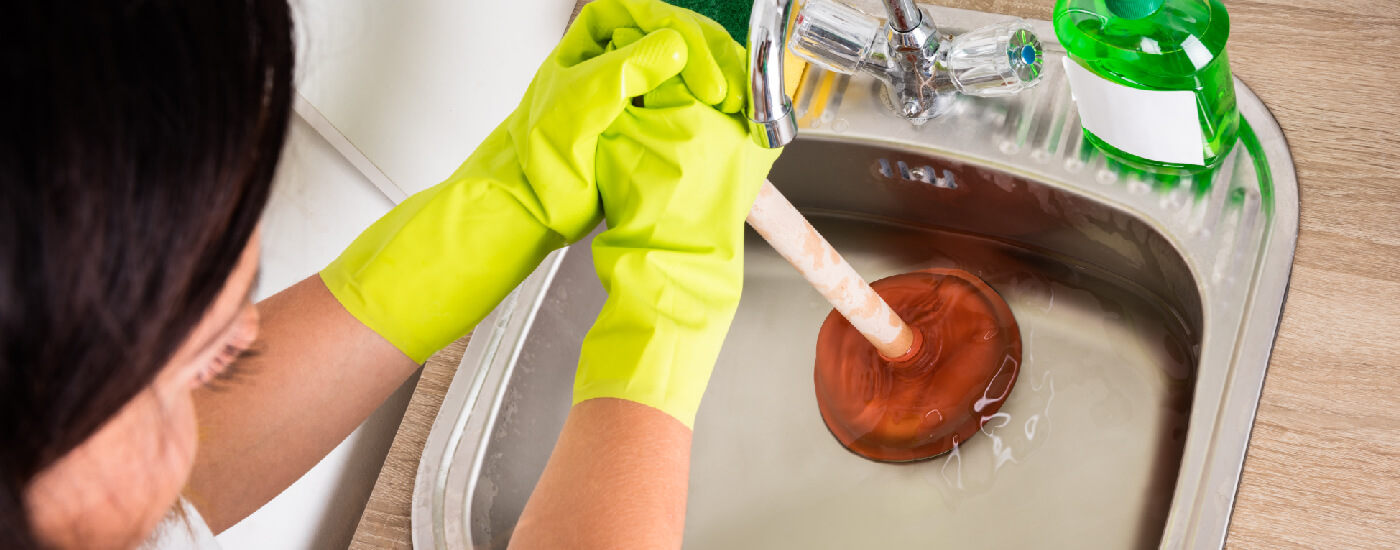This article on the next paragraphs about A Guide to Plungers (and How to Use Them) is relatively entertaining. Give it a try and draw your own ideas.

Introduction
Appropriate upkeep of home drains pipes is important for stopping clogs and guaranteeing smooth water circulation. Among the key tools in every property owner's toolkit is the bettor, alongside numerous drainpipe cleaners made to deal with stubborn blockages effectively. This write-up explores just how to use bettors and drain cleaners properly to keep your drains pipes flowing easily.
Area 1: Understanding Plungers
Sorts of Plungers
There are several kinds of bettors readily available, each developed for various sorts of drains pipes and clogs. One of the most typical kinds include mug plungers, flange plungers, and accordion plungers.
How Plungers Job
Plungers deal with the principle of creating pressure and suction to displace obstructions. When effectively used over a drainpipe, they create a vacuum that can take out debris or break up clogs.
Selecting the Right Plunger
Picking the ideal plunger relies on the kind of drain and the nature of the obstruction. Cup bettors are suitable for sinks and tubs, while flange bettors are better matched for toilets as a result of their design.
Usual Mistakes with Bettors
Avoiding these errors makes certain efficient plunging: inappropriate seal around the drain, inadequate pressure, and unclear surrounding particles.
Section 2: Making Use Of Plungers Efficiently
Prep work
Before diving, guarantee the bettor covers the drain entirely and forms a limited seal. Clear any visible particles around the drain opening.
Method
Beginning with gentle diving activities to build suction. Boost stress gradually, utilizing a constant rhythm. Repeat as required up until the drainpipe gets rid of.
Troubleshooting Tips
If plunging does not function, try adjusting the seal, using petroleum jelly for a much better seal, or using a various type of plunger.
Section 3: Comprehending Drainpipe Cleaning Company
Types of Drain Cleaners
Drain cleaners can be chemical or enzymatic. Chemical cleansers make use of solid chemicals to liquify obstructions, while chemical cleansers utilize natural enzymes to break down organic matter.
How Drainpipe Cleaning Company Job
Chemical cleaners react with obstructions to liquify them, while enzymatic cleaners break down natural products like hair and grease without harming pipelines.
Security Considerations
Constantly use gloves and eye defense when utilizing chemical drain cleansers. Guarantee adequate air flow and comply with manufacturer guidelines very carefully.
Eco-Friendly Alternatives
Consider making use of vinegar and baking soft drink or enzyme-based cleaners for green options that are much safer for pipelines and the atmosphere.
Area 4: Using Drain Cleaning Company Effectively
Application Methods
Put chemical cleansers directly into the drainpipe opening. Permit them to work for the recommended time before purging with warm water. Chemical cleansers should sit overnight.
Safety measures
Stay clear of blending various sorts of cleaners, as this can create toxic fumes. Never ever utilize chemical cleansers in conjunction with a bettor, as spilling can occur.
Taking Care Of Persistent Clogs
For persistent obstructions, think about making use of a pipes serpent or calling a professional plumbing professional to stop damages to pipes.
Verdict
To conclude, recognizing how to utilize bettors and drainpipe cleansers effectively is necessary for keeping healthy plumbing systems. By choosing the right tools and methods, house owners can take on small obstructions and protect against significant pipes concerns down the line.
How To Properly Use A Plumbing Snake To Clear Drains
When any drain clogs in our home arise, we tend to gravitate toward the plunger and little else. In cases where the plunger and its vacuum-created pressure are not able to clear clogs, many immediately move to harmful chemicals or simply call their plumber to fix the issue.
we’re happy to help with all drain cleaning needs and concerns. This includes informing you on a few other home remedies you may have at your disposal for minor to moderate clogs, one of which is the use of a plumbing snake. Many people have never used one of these before – let’s go over the steps to take when your drain clogs and you have a plumbing snake available.
Attempt Plunger Use
The first step here, as we noted above, should indeed be to grab your plunger when you notice a drain clog and attempt to resolve it this way. If you’re unsure how to use a particular type of plunger, our plumbers can answer any questions you have. If this doesn’t do the trick, however, you move on to the snake.
Locate And Prepare Snake
A plumbing snake is a metal or plastic device that’s generally about a quarter of an inch thick. It’s design with significant extensions, meant to reach down into your clogged drain and push the clog out. Snakes also contain drain augers that will latch onto and push stubborn blockages.
If your plunger doesn’t clear a clog, locate your snake and bring it to the drain in question. We also recommend keeping a bucket nearby to collect the clog once you pull it out, plus we’d advise wearing goggles and possibly protective gloves.
Feed Snake
Once you’re ready to go, feed the snake slowly down the drain, using the crank device it comes with to keep it moving until it finds the clog. Once this happens, much of the clog will be latched onto the coil so you can pull it out, while the rest will simply break up and flow downward.
Detach Debris
Remove the snake slowly from the drain, and once you’ve done so, pick off any debris that’s stuck to the coil. This is another area where wearing gloves is a must.
Flush Drain
Finally, take a few minutes to ensure the snake has done its job correctly. If you’ve been using it on a toilet, flush the toilet a couple times and make sure everything flows well. If you’ve used it on a different drain, flush it with some room temperature water.
https://www.mybuddytheplumber.com/blog/how-to-properly-use-a-plumbing-snake-to-clear-drains/

As a person who reads about Here's How to Correctly Use a Toilet Plunger, I figured sharing that piece of content was sensible. Do you know somebody who is very much interested in How to Unclog Your Sink with a Plunger? Take a moment to promote it. I love your readership.
Click Here
Comments on “Applying Plungers and Drain Cleaner: Professional Advice”